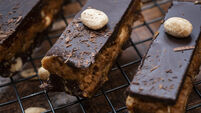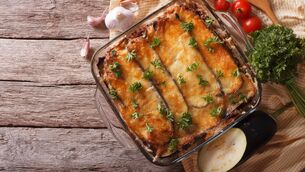Darina Allen: Rich lamb korma and other Indian recipes I learned when visiting Rajasthan
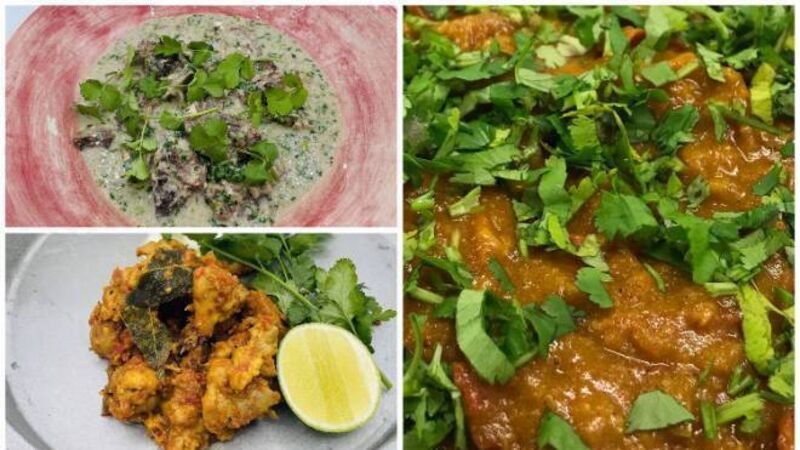
Some of the savoury selections Darina has brought home from India
Incredible India, it keeps drawing me back year after year, not just for the extraordinarily varied culture and vibrant colours but the haunting mystical music, spicy pungent smells and, of course, the food. India is huge, a subcontinent with a myriad of gods, religions, customs, temples and colourful festivals.
Dhoongar Chicken
Delicious whole smoked chicken curry from Swati Rathore at Chanoud Garh in Rajasthan - www.chanoudgarh.com
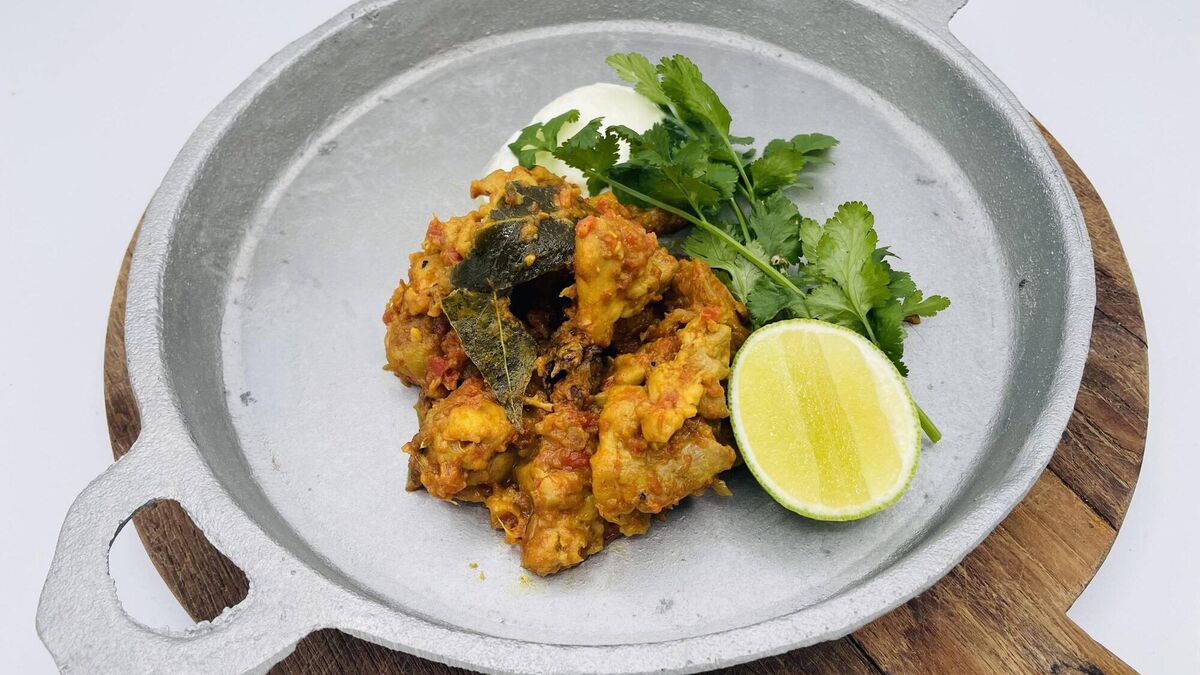
Servings
4Preparation Time
30 minsCooking Time
30 minsTotal Time
60 minsCourse
MainCuisine
IndianIngredients
Smoked chicken
2 - 3 tbsp sunflower oil
450 - 700g (1 - 1 1/2lbs) chicken pieces without skin - could be thigh or breast
175g (6oz) onion, finely sliced - save the 1st layer for smoking at the end
250g (9oz) natural yoghurt
5 tbsp fresh tomato purée
15g (generous 1/2oz) tsp ginger paste, peel and purée
15g (generous 1/2oz) tsp garlic paste, peel and purée
1 bay leaf
1 black cardamom
5cm (2 inch) cinnamon stick
2 cloves
1/4 tsp turmeric powder
1/4 tsp coriander powder
1/4 - 1/3 tsp red chilli powder
1/2 tsp salt
For the Dhoongar Smoking:
wood charcoal
1 onion, peeled and halved, remove one layer and keep for smoking
1 tsp clarified butter (ghee)
2 cloves
1 tbsp fresh coriander leaves
Method
Heat the sunflower oil on a medium to high heat in a saucepan, add the bay leaf, black cardamom, cinnamon and cloves. Stir and fry for a minute or so until the flavours are released. Then add the sliced onions and cook until beginning to brown (8 - 10 minutes). Turn up the heat, add the chicken, allow to fry for 4 - 5 minutes. Add the fresh tomato purée, yogurt, ginger and garlic paste, coriander powder, turmeric powder, red chilli powder and salt to the chicken. Stir well and bring to the boil. Cover with the lid and allow to simmer on a medium heat, stirring occasionally. When cooked (15 minutes approx.), remove the lid and fry until the oil separates and the spices are well fried (8 minutes). This is a dry curry but packed with flavour. You can add some extra ghee if necessary.
Now do the Dhoongar smoking.
Heat a stumpy piece of charcoal on a gas jet or in a barbecue.
Take the layer of the halved onion (or a little stainless-steel bowl) and lay on top of the chicken in the saucepan. Place the hot charcoal in the centre of the onion layer and then pour a little ghee or butter on top along with a couple of cloves. It will instantly start to smoke, cover immediately with a tight-fitting lid and leave for 15 - 30 minutes for the chicken to absorb the smoke.
Uncover, discard the onion, and charcoal.
Finally add the chopped coriander and serve.
Kashmiri Lamb Korma with Green Coriander
A rich, flavourful Kashmiri curry usually made with goat, but mutton, pork or beef also works well. Serve with pilaf rice.
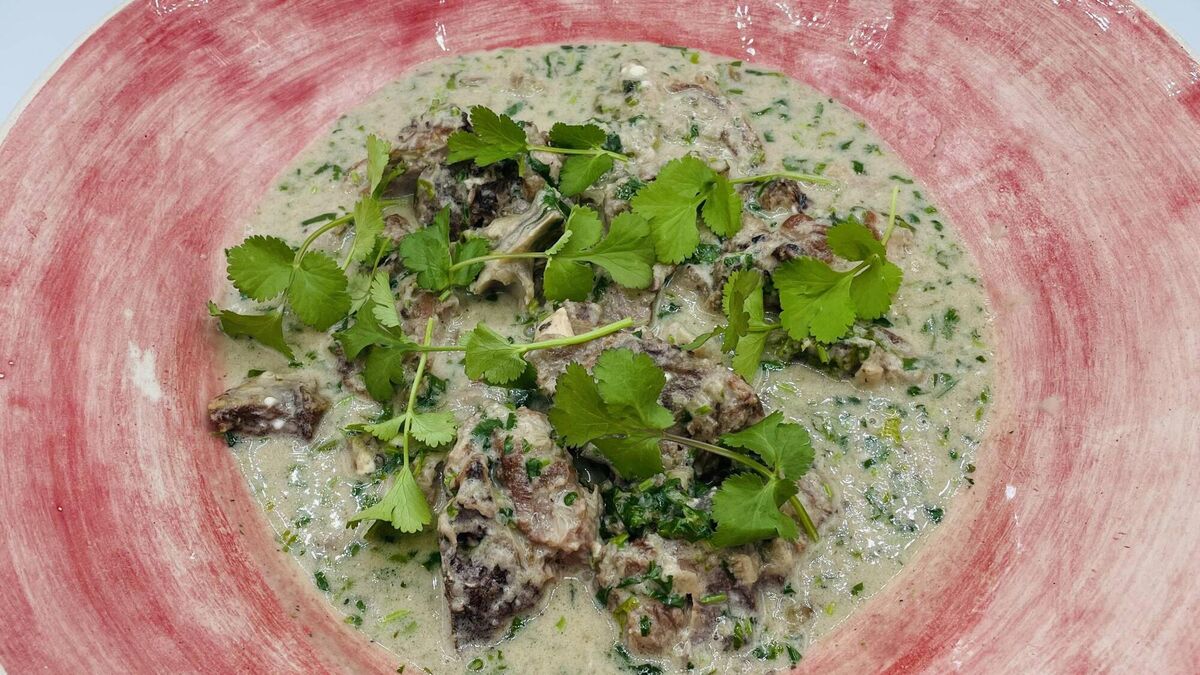
Servings
8Preparation Time
20 minsCooking Time
2 hours 30 minsTotal Time
2 hours 50 minsCourse
MainCuisine
IndianIngredients
250g (9oz) onion paste (purée)
100ml (3 1/2fl oz) water
3 - 4 necks of lamb, cut into 2.5cm (1 inch) slices and trimmed of excess fat - your butcher will do this for you
30g (1 1/4oz) clarified butter [ghee]
salt and freshly ground black pepper
15 whole green cardamom pods, gently crushed to slightly open the pod
1 x 400ml (14fl oz) tin of coconut milk
75g (3oz) green coriander, chopped
200g (7oz) natural yoghurt
Method
Whizz 100ml (3 1/2fl oz) water with the onion in a food processor for 30 seconds until it forms a smooth paste.
Heat the clarified butter in a cast-iron pan and brown the lamb for 3 - 4 minutes on each side. Cook in batches so as not to overcrowd the pan. Add to a casserole and season with salt and freshly ground black pepper. Remove the excess oil from the cast-iron pan and deglaze with 200ml (7fl oz) water and bring to a boil. Add the ground onion and cardamom and cover with the boiling water. Cover the casserole and cook in the preheated oven for 1 1/2 - 2 hours until the meat is tender. Remove from the oven.
Add the coconut milk, mix thoroughly and simmer uncovered for 15 minutes on the hob. This will produce a delicious rich sauce.
Add lots of chopped green coriander, finally stir in the yoghurt, stir well and serve.
Ahilya Fort’s Tomato Cutt
Richard Holkar at Ahilya Fort in Maheshwar kindly shared this recipe with me. Serve as a vegetable accompaniment.
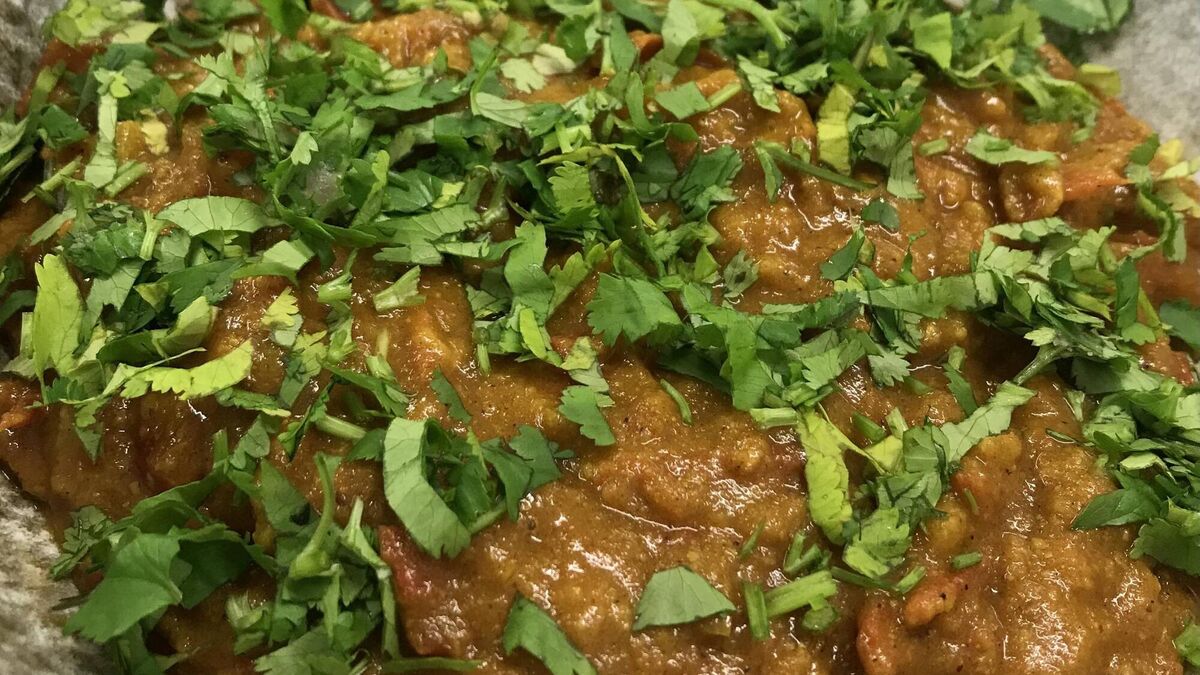
Servings
12Preparation Time
10 minsCooking Time
35 minsTotal Time
45 minsCourse
SideIngredients
6 tbsp vegetable oil
1 bay leaf
1/2 tsp cumin seeds
125g (4 1/2oz) onion, chopped into 5mm (1/4 inch) dice
450g (1lb) tomato, chopped into 5mm (1/4 inch) dice
25g (1oz) garlic paste (peel and purée)
25g (1oz) ginger paste (peel and purée)
2 tsp turmeric powder
1 - 2 tsp chilli powder, depending on how hot you like it
2 tsp cumin powder
1 tsp garam masala
2 tsp sugar
110ml (4fl oz) water or vegetable stock
1 tsp salt
250g (9oz) tomato, chopped
For the garnish:
2 tbsp fresh green coriander, chopped
Method
Heat oil in a pan on high heat, add bay leaf and cumin seeds and cook for a few seconds until the cumin pops.
Reduce the heat to medium. Add the onion and cook stirring until light brown in colour (5 - 6 minutes), then add the 450g (1lb) of chopped tomato and cook on a medium-high heat for 7 minutes.
Add the ginger and garlic paste, mix well and cook for 3 minutes. Reduce the heat, add the remaining ingredients and cook for another 7 minutes. Check for seasoning and add 1/2 teaspoon of salt if necessary.
Add remaining 250g (9oz) of chopped tomato and simmer for 5 minutes. It should be a thick soupy consistency. This will depend on how juicy your tomatoes were. If it’s too thick add 110ml (4fl oz) of boiling water or more if needed.
Garnish with fresh coriander and serve.
West Waterford Festival of Food
A date for your diaries: West Waterford Festival of Food takes place from April 14-16 2023.
The festival is one of Ireland’s largest and longest-running food festivals. It will showcase the very best food from the region as visitors enjoy upwards of 70 events including a food stage, pop-up dinners, a full children’s programme, foraging trails, bus tours, cooking demos, top chefs, high-end and casual dining experiences, plus one of Ireland’s largest outdoor markets.
The main hub for the 3-day festival is in the harbour town of Dungarvan with events also taking place in Lismore and throughout the West Waterford region, making it a truly local celebration.
- For more information, see www.westwaterfordfestivaloffood.com
An Afternoon of Spring Delights with Rachel Allen at Ballymaloe Cookery School on Thursday, March 16 2023
Join us for an afternoon of our favourite spring delights incorporating seasonal ingredients to add to your culinary repertoire. Copies of all recipes and tastings included.
- For more information, see www.cookingisfun.ie








